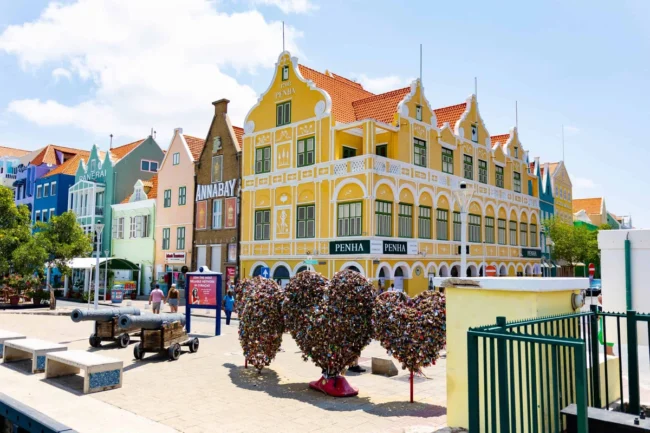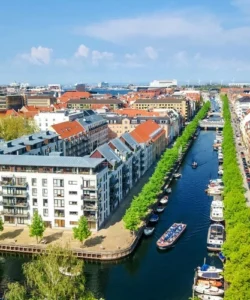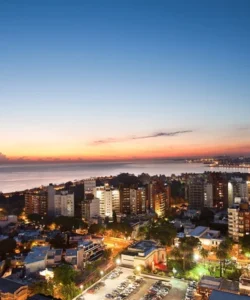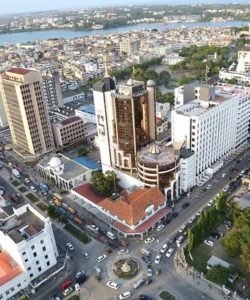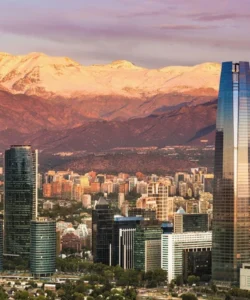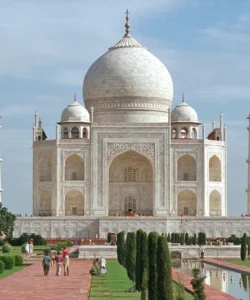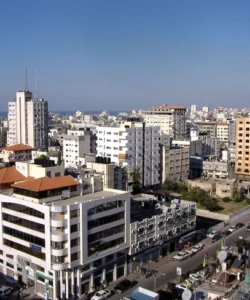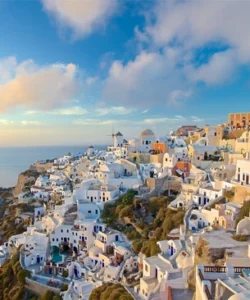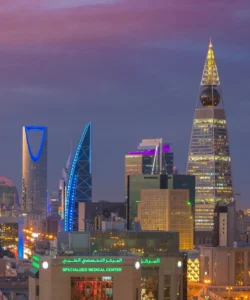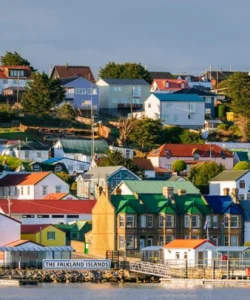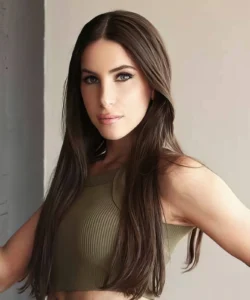Curaçao is a constituent country of the Kingdom of the Netherlands, located in the southern Caribbean Sea, about 65 km (40 miles) north of the Venezuelan coast. It’s renowned for its vibrant, colorful colonial architecture, beautiful beaches, and excellent diving and snorkeling opportunities, along with a rich, multicultural heritage.
Here’s a detailed overview:
- Area: Approximately 444 km² (171 sq mi).
- Population: Estimated at around 196,086 people as of July 2025.
- Language: The official languages are Papiamentu (a creole language similar to Aruba’s), Dutch, and English. Spanish is also widely understood.
- Currency: Netherlands Antillean Guilder (ANG). US dollars are widely accepted.
- Religion: Predominantly Roman Catholic (around 70%), with significant Protestant and other Christian denominations, as well as smaller Jewish, Muslim, and other communities.
- Capital: Willemstad.
- Major Cities/Towns: Willemstad, Sint Willibrordus, Westpunt.
Attractions & Wonders:
Curaçao offers a blend of historical, cultural, and natural attractions.
- Historic Area of Willemstad, Inner City and Harbour (UNESCO World Heritage Site): The capital, Willemstad, is famous for its distinctively colored Dutch colonial architecture, particularly along the Handelskade waterfront. The Queen Emma Pontoon Bridge (swinging bridge) connects the two main districts, Punda and Otrobanda, offering spectacular views.
- Shete Boka National Park: Located on the rugged northern coast, this park features dramatic waves crashing into limestone cliffs, creating natural blowholes (like Boka Tabla) and several coves where sea turtles lay their eggs. Great for hiking and scenic views.
- Christoffel National Park: The largest national park in Curaçao, home to Mount Christoffel, the island’s highest peak. Offers hiking trails (including the challenging climb to the summit for panoramic views), diverse flora and fauna, and former plantation houses.
- Hato Caves: Ancient limestone caves with impressive stalactites and stalagmites, as well as a waterfall and the famous “Madonna” statue.
- Diving and Snorkeling: Curaçao boasts over 80 dive sites, many of them easily accessible from shore, with abundant marine life, vibrant coral reefs, and shipwrecks. The Mushroom Forest, Superior Producer wreck, and Tugboat are popular sites.
- Klein Curaçao: A small, uninhabited island located about 10 km (6 miles) southeast of Curaçao, known for its pristine white-sand beaches, crystal-clear waters, a lighthouse, and a shipwreck. Popular for day trips, diving, and snorkeling.
- Kura Hulanda Museum: Located in Otrobanda, this powerful museum is dedicated to the transatlantic slave trade and African heritage, housed in a restored 19th-century merchant’s residence.
- Den Paradera (Herb Garden): A traditional Afro-Curaçaoan herb garden run by local herbalist Dinah Veeris, offering insights into traditional healing practices.
Architecture:
Curaçao’s architecture is its most distinctive visual feature, reflecting its Dutch colonial past adapted to the Caribbean climate.
- Handelskade and Punda: The iconic row of pastel-colored buildings along the waterfront in Willemstad, painted in vibrant hues of blues, yellows, pinks, and greens. This unique color scheme dates back to a governor’s decree in the 19th century who suffered from migraines exacerbated by white buildings.
- Gabled Roofs and Facades: Many buildings feature characteristic Dutch gables, intricate facades, and sometimes arcades, but adapted with larger windows and balconies suitable for the tropical climate.
- Plantation Houses (Landhuizen): Spread throughout the island, these large, historic country estates, often painted yellow, served as the centers of former plantations. Many have been beautifully restored and repurposed as restaurants, museums, or boutique hotels.
- Otrobanda: The “other side” of Willemstad, historically a more residential and working-class area, now undergoing revitalization with many beautifully restored historic buildings.
Roads:
Curaçao has a relatively good road infrastructure, especially in and around Willemstad and connecting the major tourist areas. Roads are generally well-maintained, and signage is clear. Driving is on the right-hand side. While navigating is straightforward, some rural roads or those leading to more secluded beaches might be unpaved or less maintained. A rental car is highly recommended for exploring the island beyond Willemstad.
Hotels:
Curaçao offers a range of accommodation, from large resorts with casinos to charming boutique hotels and guesthouses.
- Sandals Royal Curaçao (Santa Barbara): A luxurious all-inclusive resort, recently opened.
- Dreams Curaçao Resort, Spa & Casino (Piscadera Bay): A popular all-inclusive option.
- Renaissance Wind Creek Curaçao Resort (Willemstad): Located in the heart of Willemstad, near the Handelskade, with an infinity pool overlooking the ocean.
- Avila Beach Hotel (Willemstad): A historic and elegant independent hotel with its own private beaches.
- Scuba Lodge & Ocean Suites (Pietermaai): A charming boutique hotel in a renovated historic area, popular with divers.
- Kunuku Aqua Resort (St. Willibrordus): A family-friendly resort with a water park.
- Papagayo Beach Hotel (Jan Thiel): A trendy resort located in a popular bay with restaurants and shops.
Restaurants:
Curaçao’s culinary scene is a vibrant reflection of its multicultural population, blending Dutch, Caribbean, Indonesian, African, and Latin American influences.
- Gouverneur de Rouville (Willemstad): Offers a mix of international and local cuisine with stunning views of the Handelskade and Queen Emma Bridge.
- Karakter (St. Michiel): Beachfront dining with a relaxed atmosphere and good food.
- Plasa Bieu (Old Market – Willemstad): A must-visit for authentic local food in a canteen-style setting, where you can try traditional stews from different vendors.
- Fishalicious (Willemstad): Known for its fresh seafood dishes.
- MosaCana (Pietermaai): Features Caribbean and Latin American tapas.
- Zest Mediterranean (Jan Thiel): Offers Mediterranean cuisine on the beach.
- Jaanchie’s Restaurant (Westpunt): A quirky, legendary local spot famous for its fresh seafood and unique local dishes like iguana stew.
Cuisine:
Curaçaoan cuisine is flavorful and diverse, often referred to as “Krioyo” (Creole) cuisine.
- Staple Foods: Fresh seafood, goat meat, beef, rice, plantains, and various root vegetables.
- Popular Dishes:
- Keshi Yena: Similar to Aruba’s, this is a large, round ball of cheese (often Edam or Gouda) stuffed with spiced meat (chicken or beef), vegetables, and sometimes nuts and raisins, then baked. It’s often considered the national dish.
- Stoba (Stew): Hearty stews made with various meats like beef (karni stoba), goat (kabritu stoba), or even iguana, slow-cooked with vegetables and aromatic spices.
- Sopi Kadushi (Cactus Soup): A traditional soup made from the local Kadushi cactus, often with goat meat, providing a unique texture and flavor.
- Funchi: A cornmeal side dish, similar to polenta, typically served with stews or grilled fish.
- Batata (Sweet Potato) and Funchi Fries: Common side dishes.
- Arepas: Flat, grilled cornmeal patties, often stuffed with cheese, ham, or other fillings, influenced by Venezuelan cuisine.
- Salted Codfish: Prepared in various ways, often with onions and peppers.
- Pastechi: Savory fried pastries with different fillings, a popular snack.
- Local Sweets: Kokada (coconut candy) and various fruit tarts.
- Blue Curaçao Liqueur: While not a food, this iconic blue liqueur, distilled from the Laraha citrus fruit (unique to Curaçao), is a famous export and ingredient in many cocktails.
